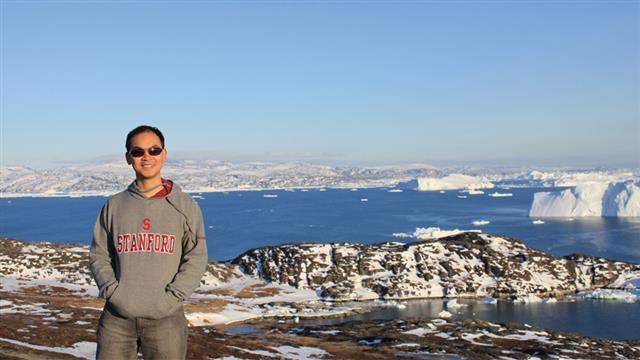Prof. Liu Lin, assistant professor of the Earth System Science Programme, revealed in a joint research with international scientists that the Northeastern part of Greenland, the last remaining stable portion of Greenland's ice sheet that has been stable for 25 years, is losing its ice rapidly. In particular, the Zachariae glacier has suffered a very significant retreat of 20 km just over the last decade. Despite the long geographical distance between Hong Kong and Greenland, ice loss from Greenland glaciers directly contribute to global sea level rise and receiving increasing attention from the general public.
To quantitatively determine the sustained glacier thinning and mass loss, the interdisciplinary team of 13 scientists from 10 institutions (including the lead institution Technical University of Denmark, Stanford University and CUHK) in five countries synthesized a diversity of data acquired using geophysical and remote sensing techniques. Professor Liu's contribution to this study is primarily to map glacier flow motions from satellite radar images. They found that glacier speeds increased by more than 100 metres per year from 2001 to 2012.
Professor Liu said, 'The faster a glacier moves, the more ice it carries from Greenland's interior to the ocean, contributing to global sea level rise. Our study shows that appreciable mass loss was triggered in 2003 and has sustained over the past ten years. The likely cause of the sustained mass loss is a combination of warmer summer air temperatures and sea temperatures.'
The findings of this research have been published recently in Nature Climate Change.
For details, please click here.


